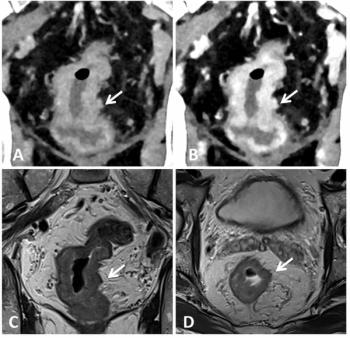
MR shows promise as alternative to optical colonoscopy
Radiologists have not been able to obtain MR data of sufficient resolution to perform volumetric imaging of the colon within a breath-hold -- until now.
Radiologists have not been able to obtain MR data of sufficient resolution to perform volumetric imaging of the colon within a breath-hold - until now.
Researchers at Stanford University in California, working with GE Healthcare, used parallel imaging at 3T to obtain spatial resolution and anatomic coverage that generated diagnostic images of the entire colon. Their research documented that losses in signal-to-noise ratio, which occur due to the use of parallel imaging, were offset enough by the use of 3T to make the images suitable for diagnosis.
"Without parallel imaging, one would be forced to compromise either spatial resolution or coverage to limit scan time to short breath-hold durations," said Anja C.S. Brau, Ph.D., a senior scientist in the MR Body and Vascular Group at the Global Applied Science Lab of GE Healthcare. "Parallel imaging in two dimensions allowed the acquisition of artifact-free images with the desired resolution and coverage while keeping the scan time duration to manageable breath-hold times."
Four men and three women at high risk for colon cancer who had prior polyps or a family history of colon carcinoma were recruited for the study. They underwent MR scans including oblique coronal 2D single-shot fast spin-echo scout images for monitoring colonic water insufflation (approximately 2000 mL), and a dedicated colonic 3D steady-state free precession (SSFP) volume to obtain high-quality localization and diagnostic images. One-D- and/or 2D-accelerated 3D T1-weighted fat-suppressed spoiled gradient echo data were then acquired in the oblique coronal plane before and after intravenous contrast administration.
Although MR colonoscopy uncovered fewer lesions than optical imaging, the researchers demonstrated that the MR-based procedure was feasible, generating high-resolution, diagnostic colonography images without significant motion or parallel imaging artifacts.
"The reconstructed parallel imaging data exhibited diagnostic image quality with no visible SNR degradation," Brau said.
Brau and colleagues next plan to investigate the potential of MR colonoscopy with higher acceleration factors, correlating those findings with conventional colonoscopy.
Newsletter
Stay at the forefront of radiology with the Diagnostic Imaging newsletter, delivering the latest news, clinical insights, and imaging advancements for today’s radiologists.



























